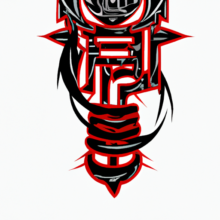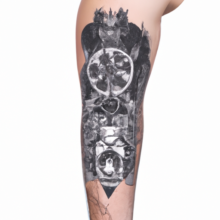The Teardrop Tattoos And Its Various Meanings
Teardrop tattoos, one of the most recognized tattoo symbols, carry a wide range of meanings, often depending on the individual wearing it. This iconic ink is traditionally located beneath the eye and has long been associated with emotions of sorrow, grief, and loss. Yet, in many subcultures, the teardrop tattoo can signify deeper, more complex interpretations, often related to personal experiences, gang affiliations, or time spent in prison.
The prevalence of teardrop tattoos in popular culture, from movies to music videos, has made the design a widely recognized image. However, not everyone understands the nuanced symbolism behind it. The meaning of the teardrop tattoo can differ greatly depending on factors like geography, community, or personal interpretation, making it an intricate and highly personal form of self-expression. This article explores the history, meanings, and societal perceptions surrounding teardrop tattoos.
Historical Background of Teardrop Tattoos
Teardrop tattoos have a long-standing association with prison culture, especially in the United States and parts of Latin America. In these environments, the teardrop tattoo was originally a symbol worn by inmates to represent loss, either the loss of a loved one or a fellow gang member. In some cases, the teardrop tattoo may even signify that the wearer committed a murder in retaliation for the loss of someone close to them.
In other regions or contexts, teardrop tattoos have been associated with having served time in prison, often for a violent crime. For many, the teardrop represents a physical manifestation of their past mistakes or hardships. However, the specifics of what a teardrop tattoo means can vary depending on the subculture or group in which it is worn.
The ink’s evolution has moved beyond prison walls, as teardrop tattoos have found their way into broader popular culture. This shift has led to some misunderstanding, with people getting teardrop tattoos without fully realizing the implications, leading to potential misinterpretations of their intent or personal history.
Meanings Behind the Teardrop Tattoo
While historically tied to crime and incarceration, the meanings behind teardrop tattoos can be deeply personal. These tattoos often represent sorrow or a traumatic event in a person’s life, such as mourning the death of a loved one. For some, it may symbolize unexpressed emotions—crying without shedding actual tears. This emotional layer gives the tattoo a more metaphorical interpretation, representing internalized pain and grief.
For others, especially within certain subcultures, the teardrop tattoo may be linked to acts of violence or gang initiation. In these instances, the tattoo serves as a mark of status or loyalty. One interpretation within gang communities is that a filled-in teardrop symbolizes the wearer has committed murder, while an empty teardrop might signify that someone close to the wearer has been killed, and they are seeking revenge.
In some cases, individuals who have gone through profound personal losses, like the death of a child or partner, get teardrop tattoos to externalize their grief. Here, the tattoo represents not crime but deep emotional pain and the resilience to endure personal tragedies.
Teardrop Tattoos in Pop Culture
With the rise of tattoos as a mainstream form of self-expression, teardrop tattoos have made appearances in music, film, and television. Celebrities like Lil Wayne and Amy Winehouse, who sported teardrop tattoos, contributed to the ink’s growing recognition in modern pop culture. However, the increased visibility of teardrop tattoos has also led to casual appropriation by people who may not understand its original significance.
For instance, individuals might choose to get a teardrop tattoo purely for aesthetic reasons or because they’ve seen it on a favorite celebrity, not realizing the weight it carries. While this phenomenon may help diffuse the strict associations with crime, it also risks diluting the symbolism for those who wear the tattoo for more personal or cultural reasons.
Societal Perceptions and Misunderstandings
Teardrop tattoos are often misunderstood due to their complex associations. When people see a teardrop tattoo, especially in a Western context, they may automatically link it to criminal behavior or incarceration, even though this isn’t always the case. For many, the tattoo might be a reminder of personal grief or a memorial to a loved one rather than a reflection of a criminal past.
Nevertheless, this misunderstanding can create stigma around teardrop tattoos, causing assumptions that may not align with the wearer’s actual life experiences. In some cases, individuals with teardrop tattoos may face judgment or discrimination, particularly in professional settings, where tattoos are still sometimes frowned upon.
The Teardrop Tattoo’s Evolving Meaning
As tattoo culture continues to evolve and diversify, so too does the meaning of teardrop tattoos. While they may never fully shed their associations with prison life and violence, they are increasingly being reclaimed as symbols of personal strength, resilience, and emotional expression. For many, getting a teardrop tattoo can be a way of visually communicating their inner struggles, losses, or even triumphs over adversity.
Teardrop tattoos are unique in their ability to convey a story or a feeling without words, making them a powerful symbol in both popular and personal contexts. Whether worn to represent sorrow, revenge, or simply an emotional burden, the teardrop tattoo remains one of the most recognizable and complex symbols in the world of body art.
In conclusion, teardrop tattoos embody a spectrum of meanings—ranging from grief and personal loss to associations with crime and violence. While their roots in prison culture remain, teardrop tattoos are increasingly being used as personal symbols of emotional expression. Understanding the background and depth of teardrop tattoos helps to appreciate this iconic design beyond its superficial associations.



